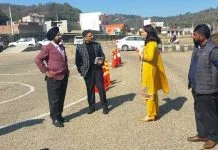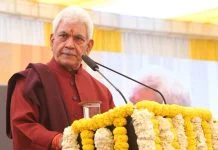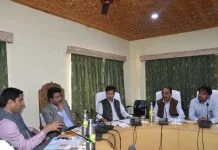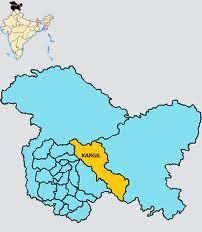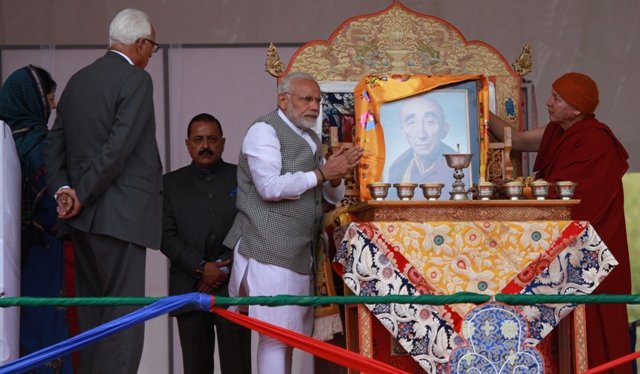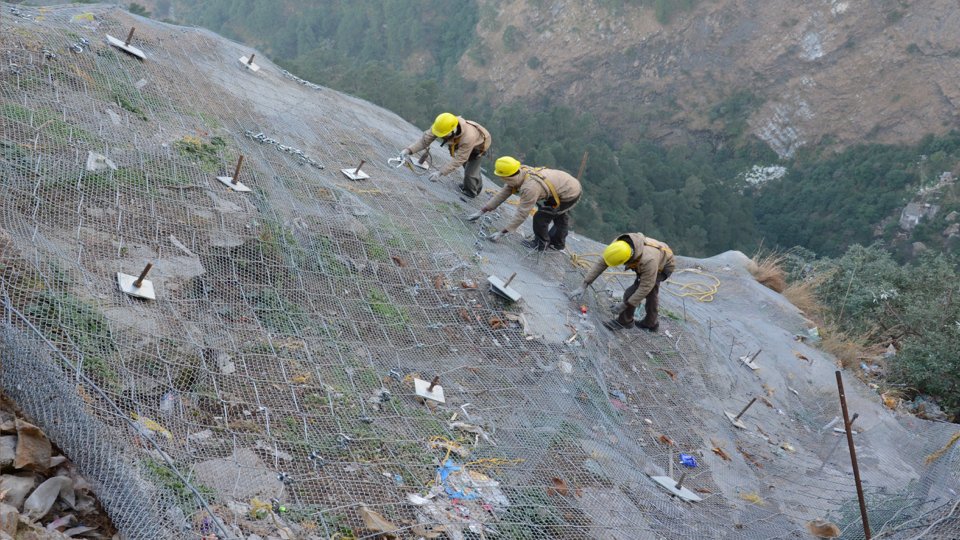Governor N. N. Vohra, Chairman, Shri Mata Vaishno Devi Shrine Board, reviewed the Rs. 77 crore THDCIL project, which is being executed in phases, to protect, treat and stabilise 33 sites on the Trikuta mountains which have been identified as potentially the most vulnerable from the point of view of landslides and stones falling on the tracks. This phased project is being executed as a long term measure to ensure against falling stones and landslides on the tracks, which have been causing injuries and deaths of pilgrims, and to enhance the safety and security of the pilgrims.
In the first phase, 5 of the most vulnerable sites between Katra and the Shrine have been taken up at an estimated cost of Rs. 18 crore, the work on which is nearing completion at Adhkuwari and Himkoti Yatra Marg.
The I phase project, for which M/s THDCIL (an Undertaking of Government of India and UP) have provided consultancy is being executed by a consortium of M/s Geobrugg AG of Switzerland and M/s Pioneer Foundation Engineers of India. It is relevant to note that on the recommendations of THDCIL, IIT Kanpur had carried out the work of Topography Survey and IIT Roorkee had done the Geological Mapping and Slope Stability Studies.
The methodology being utilised for protection, treatment and stabilisation of Trikuta Mountain slopes comprises interventions which involve highly sophisticated techniques like installation of ‘High Energy Absorption Rockfall Barriers’, ‘High Tensile Strength Steel Wire-Mesh’, ‘Rolled Cable Net’ and concrete work including shotcrete, cladding, drilling grouting, anchoring as well as other site specific treatments.
The rockfall barriers, manufactured in Switzerland, can arrest a falling boulder upto 16 MT in weight i.e. upto 2.5m dia rock, falling freely from upto 60m height or rolling down 100m from an uphill slope. M/s THDCIL had designed the barriers for the first time in 2013 for the Vaishno Devi Project. Since then rockfall barriers, having energy absorption upto 3000 KJ, have been used in several other projects in India. As slopes of the Vaishno Devi Project are steep and high rockfall barriers of 5000 and 8000 KJ energy absorption are being used on the Trikuta mountains, for the first time in India.
Shri A. K. Sahu, CEO of the Shrine Board informed the Chairman that, as earlier directed by the latter, extensive work is also underway to construct rain shelter sheds on the tracks. CEO reported that so far about 15 km track length has been covered with shelter sheds while work to cover the remaining vulnerable stretches of the tracks is in progress. High quality heavy gauge CGI sheets are being used to cover the sheds which absorb the thrust of the smaller falling stones. For greater safety, at the Board’s request, M/s THDCIL has prepared an improved version of shelter sheds which can take upto 30 to 40 kgs load. Chairman has directed CEO to erect these new sheds, on trial basis, at several identified vulnerable locations.
CEO reported to the Chairman that, as per his earlier direction, an 8 feet high welded mesh fence has been erected all along the track to ensure against any pilgrim accidentally falling down the hill slopes. As of now this fencing has been erected along 18 km of the tracks, at an approximate cost of Rs. 7 crore.
Chairman observed that, along with the five Jammu based Board Members, he would be undertaking an early visit to the Shrine area to inspect the slope stabilisation work which has been so far done under the guidance of Shri H. L. Maini, Technical Adviser and Member of the Board.


